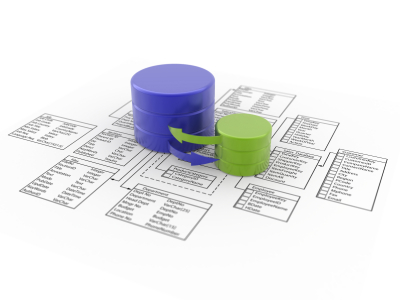Systems have been classified in different ways. Common classifications are: Physical or abstract systems Open or closed systems Deterministic or probabilistic systems Man-made information systems Physical or Abstract Systems: Physical systems are tangible entities that may be static or dynamic in operation. Abstract systems are conceptual or non-physical entities which may be as straightforward as formulas of relationships among sets of variables or models – the abstract conceptualization of physical situations. Open or Closed Systems: An open system continually interacts with its environments. It receives inputs from and delivers output to the outside. An information system belongs to this category, since it must adapt to the changing demands of the user. In contrast, a closed system is isolated from environmental influences. In reality completely closed systems are rare. Deterministic or Probabilistic Systems: A deterministic system is one in which the occurrence of all events is perfectly predictable. If we get Continue reading
Management Information Systems
ERP System – Implementation Methodologies, Benefits, and Bottlenecks
ERP system is an Industry term that denotes an Information technology solution use to integrate a broad set of activities and resources in an organization. An ERP system basically helps to shape and redefine businesses in the management of vital parts of its core business. The Structure and the information that is accrued from an ERP system facilitate optimal performance necessary for attaining organizational objectives. ERP is an acronym for Enterprise Resource Planning. The main feature of an ERP system is capacity to integrate businesses through application of modern technology and relevant business management practices. The integration of business processes with new information technology is critical towards success in the world of today. This integration has been transforming businesses to operate in modern information age. Necessarily to adapt to the new information age, organizations are forced to discard the traditional way of conducting business or managing organizational resources. Advancement of information technology Continue reading
Logistics Information System
Meaning and Definition of Logistics Information System In logistics management, the main task is to control the supply of products to the final consumer. The business unit acts at the source while the consumer acts as the destination of the products. Supply chain management (logistics management) helps keep in track all activities that occur to the products from time of dispatch to time of consumption. The number of times that the products change hands is also accounted for in the logistics management and plays a very vital role in the whole process. Logistics information system is an important information system in a firm, it will affect company’s logistics decision making. It provide reliable and safe delivery and reducing transporting cost. Logistics information system is nothing but a part of Management Information System to manage, control and measure the logistical activities. These activities occur within the organization or as well as overall Continue reading
Introduction to Database Concepts
A database is a collection of related data. By data, we mean known facts that can be recorded and that have implicit meaning. For example, consider the names, telephone numbers and addresses of the people we know. A Database Management System (DBMS) is a collection of inter-related data and a set of programs to access those data. The primary goal of a DBMS is to provide an environment that is both convenient and efficient to use in retrieving and storing database information. DBMS is a general purpose software system that facilitates the processes of defining, constructing, manipulating and sharing databases among various users and applications. Defining a database involves specifying the data types, structures and constraints to the data to be stored in the database. The database definition or descriptive information is also stored in the database in the form of a database catalog or dictionary; it is called metadata. Continue reading
System Development Life Cycle
To understand system development, we need to recognize that a candidate system has a life cycle, much like a living system or a new product. Systems analysis and design are based to the system life cycle. According to Dennis, Wixom, and Tegarden(2009) “the systems development life cycle (SDLC) is the process of understanding how an information system (IS) can support business needs by designing a system, building it, and delivering it to users.” The stages are described below. The analyst must progress from one stage to another methodically, answering key questions and achieving results in each stage. Step 1: Recognition of Need — What is the Problem? One must know what the problem is before it can be solved. The basis for a candidate system is recognition of a need for improving an information system or a procedure. For example, a supervisor may want to investigate the system flow in Continue reading
Data Processing Operations
A data processing procedure normally consists of a number of basic processing operations performed in some order (not necessarily the order of their description below). The means of performing the processing operation vary according to whether manual, electro-mechanical, or electronic methods are used. Many business find that the best solution to their processing requirements is to use a combination of methods; e.g., manual may be used for small-volume jobs while computers may be used for large-volume tasks. Recording. Recording refers to the transfer of data onto some form of documents. It relates to the documentation of intermediate figures and facts and resulting from calculations. For example, in computing gross pay, the numbers of hours worked are multiplied by the hourly rate to arrive at gross pay. Gross pay is an intermediate step which is retained temporarily for late use. Verifying. Since recording is usually a manual operation, it is important Continue reading


